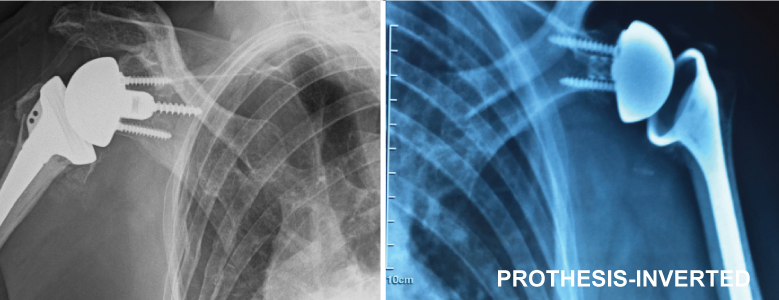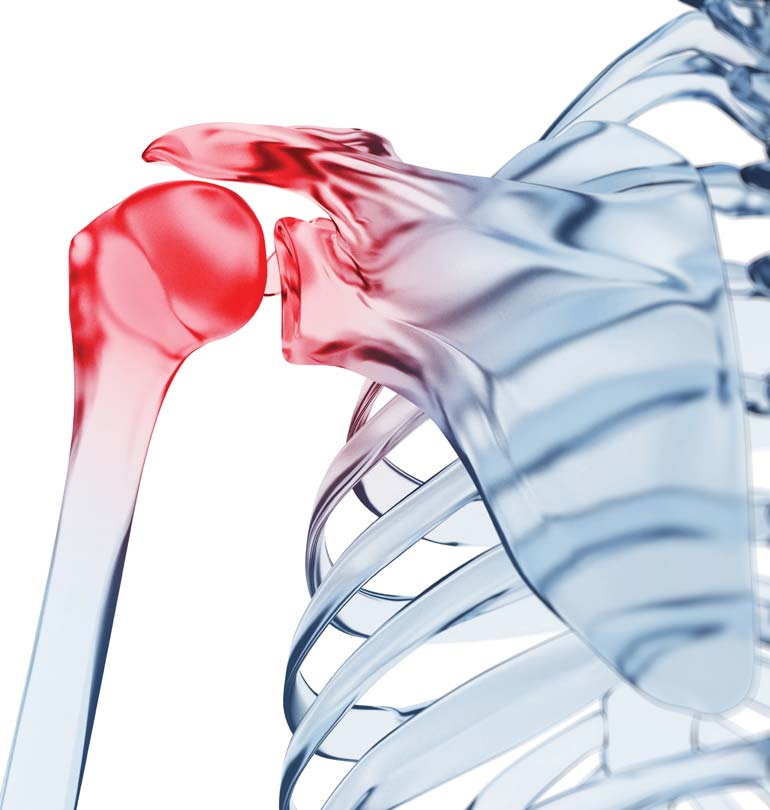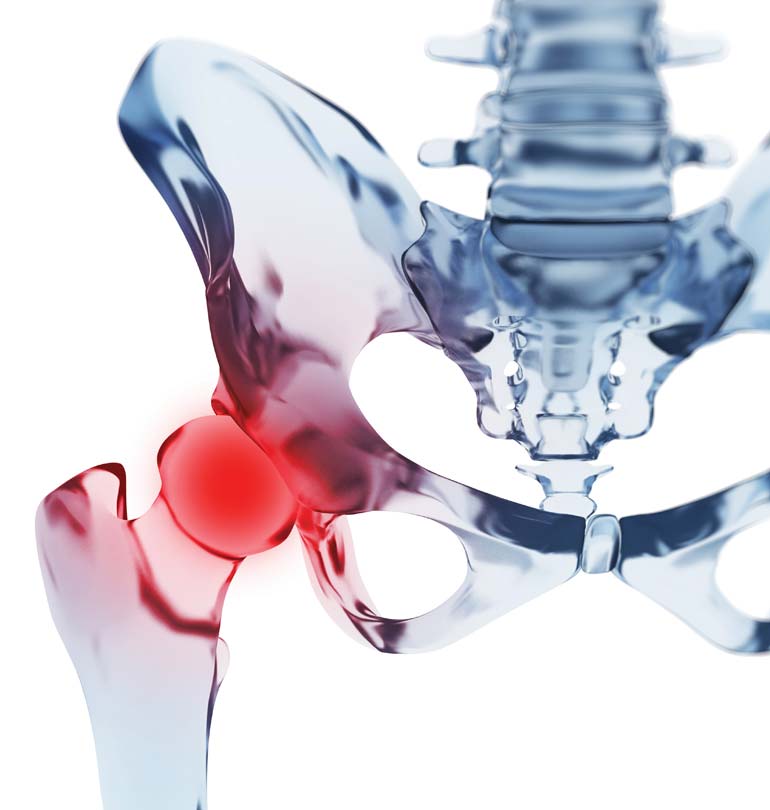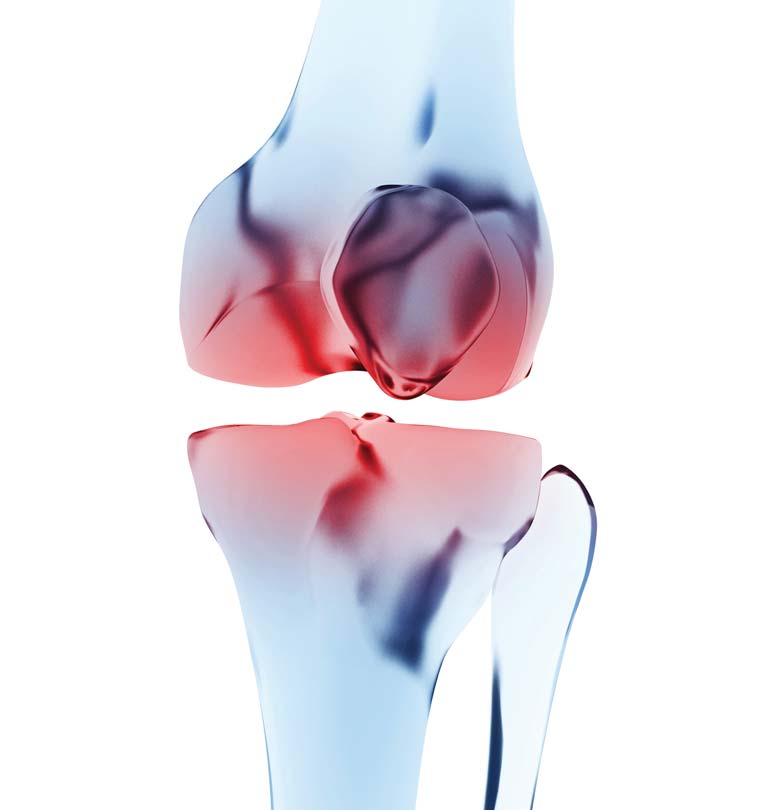
PATHOLOGIES
Osteoarthritis
It is a gradual wear of the cartilage surfaces covering the humeral head and the glenoid of the scapula. This gradually leads to a painful shoulder disability.
We're talking about "centered" omarthrosis when the cuff tendons are safe which allows the conservation of reports and anatomical situations of the humeral head and the scapula.
In the case of eccentric omarthrosis, we find an ascension of the humeral head with progressive loss of contact with the scapula. This type of shoulder osteoarthritis is due to a complete related rupture of cuff tendon.

DIAGNOSTIC
- Pain: persistent, significant intensity, increased when moving
- Stiffness: limitation of the shoulder motion which can cause a discomfort sensation when making daily activities (eating, drinking, combing hair)
- Complementary examinations:
- Initial check-up: standard radiographs: are often sufficient
- Complementary check-up: CT scan and arthrography are often required: they allow the study of bone structures as well as the cuff status.
TREATMENT
- Medical: analgesics, anti inflammatories, infiltration, and rehabilitation are used at early stages and can relieve pain without stopping osteoarthritis development.
- Surgical: treatment of choice: prosthetic surgery.
- Simple humeral prosthesis: replacing only the humeral head: intended for young patients having safe cuff without bone damage on the scapula. it Gives solutions if any resumption . Are also indicated in complex fractures of the humeral head.
- Full shoulder prosthesis " anatomical" targeting patients who having full joint with a safe cuff.
- The shoulder inverted prosthesis targets patients having deficient cuff.
The various types of prosthesis are listed for information purposes. Their choice is determined by the surgeon based on clinical and paraclinical data.
FOLLOW-UP
Hospitalizations average is 3-4 days.
Motion on abduction pad is necessary for 45 days. However rehabilitation is immediate, it will be passive only during this period.
Active rehabilitation is started after the sixth week.
Recovery is gradual with an almost normal movement between the 3rd and 5th months. The improvement can continue over a year leaving an important margin of appreciation.
Like any prosthesis ,this one has an average lifespan of 12 - 15 years. Regular follow-up is therefore necessary in order to act in time in case of resumption necessity.








